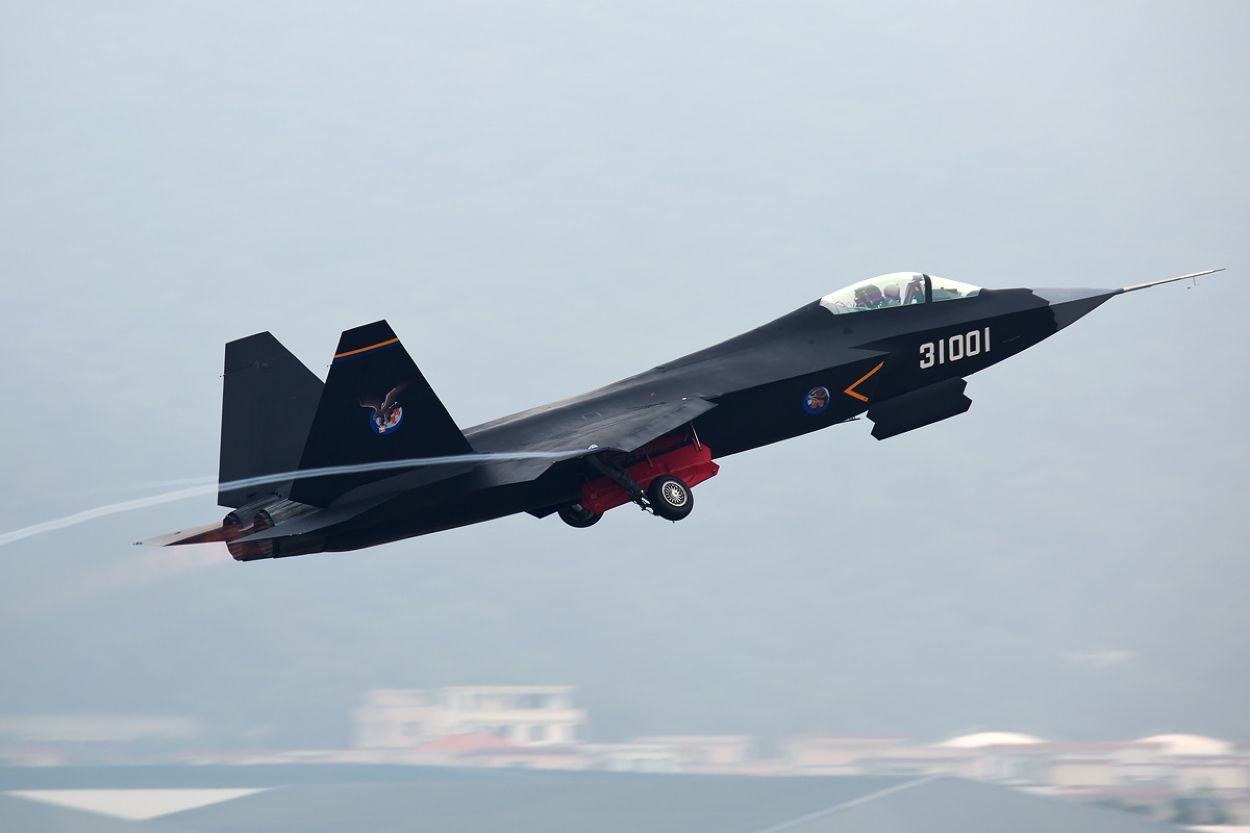The acquisition of the American single-seater, single-engine stealth fighter jet F-35 ‘Lightning II’ remains a pipedream for the Middle Eastern countries, baring Israel. Meanwhile, China has moved to fill the gap and help the countries achieve localization in defense manufacturing by offering its latest FC-31 (J-31) Gyrfalcon stealth jet.
S-400 On Track! Russia Refutes Delivery Disruption Claims On Last Batch Of S400 Systems To India
Several foreign arms sale deals initiated by former US President Donald Trump, including the selling of 50 F-35s to the United Arab Emirates and 3,000 precision-guided bombs to Saudi Arabia, have been put on hold by the Biden Administration in 2021.
The deals were fast-tracked after Abu Dhabi acquiesced to normalize relations with Israel. But, the procurement of F-35s remains a distant dream.
After President Joe Biden took over, his administration reviewed the arms sale of the Trump administration and put it on hold. This came primarily because of criticism of the UAE and Saudi Arabia over their years-long war in Yemen, which has sparked one of the world’s worst humanitarian crises and rages on even now.
Only Israel flies the F-35 in the region, part of its so-called “qualitative edge” granted by America after Israel fought several wars against its Arab neighbors since its founding. The US, however, has reiterated its commitment to provide the F-35s to the Middle Eastern nations.
Keeping in mind how geopolitics impact defense preparedness, Saudi Arabia wants to increase the localization of defense hardware to at least 50 percent by 2030, and Chinese weapon manufacturers can provide technology transfers to contribute to localized manufacturing.
The Global Times quoted an anonymous Chinese military expert saying its defense products are not only “affordable, but also feature advanced technologies and are of top quality.” They also provide complete after-sales services and do not attach unreasonable political strings, the expert said.
The Chinese defense companies occupy the largest area after hosting the ongoing World Defense Show 2024 in the Saudi capital of Riyadh from February 4 to 8.
And on display are an array of Chinese-produced weapons and weapon platforms. The prominent are the FC-31 stealth fighter jet, the JH-7 fighter bomber, the Y-20 strategic transport aircraft, the Y-9 tactical transport aircraft, the AG600 amphibious aircraft, drones like the Wing Loong series, the CH series, and the FH series, plus vessels, tanks, and armored vehicles, howitzers and multiple launch rocket systems, radars, as well as air defense guns and missiles.
The US dilly-dallying in selling the F-35 could pave the way for the Chinese FC-31 as Beijing is more than eager to sell the fighter jet that is designed to provide close-air support and air-to-ground bombing.
Earlier, the UAE had reportedly agreed to invest in the Russian Su-75 “Checkmate” development program, only to pull out after a year.
After the F-35, the Chinese claimed the FC-31 as the world’s second stealth carrier-based fighter plane. A claim that Western experts take with a pinch of salt.
Kris Osborn, writing for The National Interest, stated, “The Chinese J-31 jet somewhat lacks when it comes to F-35B-like vertical take-off-and-landing, and any ability to parallel, replicate, or in any way ‘match’ the computing, sensing, and weapons capabilities of an F-35 jet.”
If Not The F-35, Then A Jet Resembling It?
The UAE’s search for a 5th generation fighter jet continues, and it can stop at FC-31, the underdeveloped 5th generation fighter jet developed by the Shenyang Aircraft Corporation.
Malaysian Chief of Army, General Tan Sri Dato' Muhammad Hafizuddeain Bin Jantan, observing a model of FC-31 (J-31), a Chinese 5th generation combat aircraft, at World Defense Show 2024. 🇨🇳🤝🇲🇾#WDS2024 pic.twitter.com/8dJrvHvMIK
— Global Defense Insight (@Defense_Talks) February 7, 2024
Many observers have noted the stark resemblance that the FC-31 has with the American F-35. The flat tail and twin engines of FC-31 seem to be derived from the F-22, and the front end resembles the F-35.
This doesn’t come as a surprise as a 2014 “U.S.-China Economic and Security Review Commission” Congressional report cited a Defense Science Board finding that Chinese cyber-attacks have siphoned off crucial specs and technical details of a range of US weapons systems—including the F-35. The J-31 features advanced stealth technology, including a carefully designed shape and radar-absorbent materials, to reduce its radar cross-section and enhance survivability on the battlefield.
Although the FC-31 is not currently in service with the PLAAF, it appears that the manufacturer is working hard to even offer it to the Chinese military. The latest effort is part of a plan, according to the company, to allow the FC-31 to serve two markets: domestic and international.
Recently, Pakistan made its interest in purchasing FC-31 official. The Islamic Republic wants to replace its aging fleet of F-16 and Mirages, making the Chinese fighter jet its only option.

The FC-31 prototype was powered by two Russian engines, RD-93, with an afterburning thrust of 2×81 kN (Thrust to weight ratio: 4.82 dry, 7.9 afterburning). The engines could be the chink in FC-31’s armor.
After some time, Shenyang Aircraft Corporation replaced the RD-93 turbofans with new stealthy engines WS-13 from Guizhou Aircraft Industry Corporation. Beijing has offered the same engine for the technically troubled JF-17 exported to the Pakistan Air Force (PAF), but Pakistan refused.
The other fact that puts FC-31 in a disadvantageous position is that it is not currently in service with the PLAAF. But it appears that the manufacturer is working hard to even offer it to the Chinese military (who had already rejected the aircraft).
According to the company, the latest effort is part of a plan to allow the FC-31 to serve two markets: domestic and international.
- Ritu Sharma has been a journalist for over a decade, writing on defense, foreign affairs, and nuclear technology.
- She can be reached at ritu.sharma (at) mail.com
- Follow EurAsian Times on Google News




